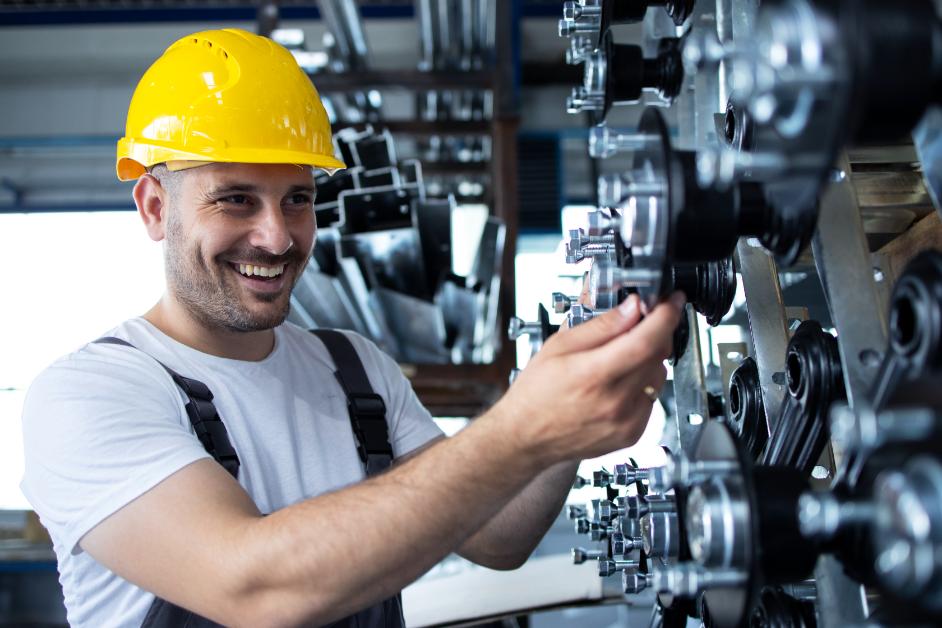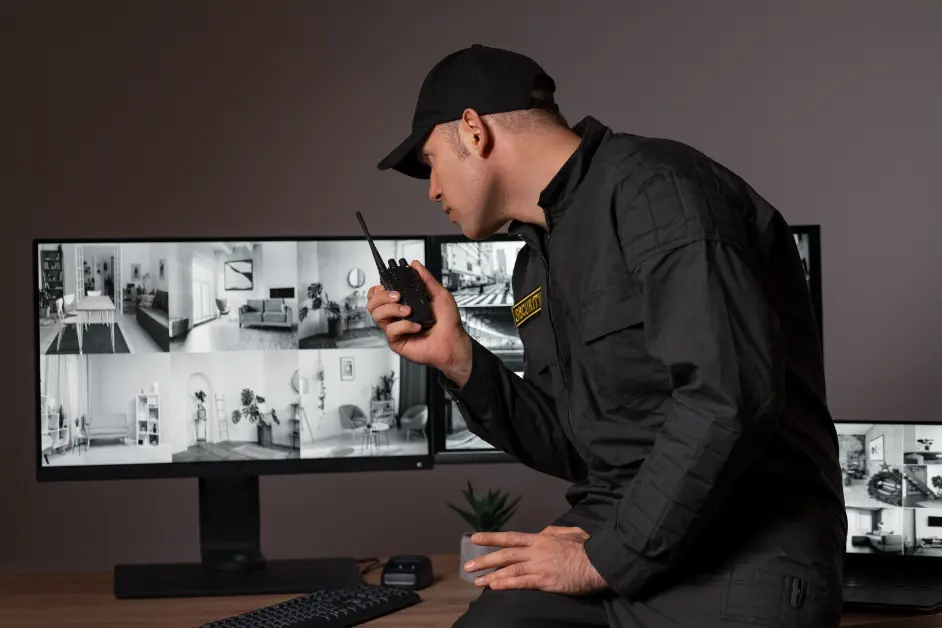Ever wonder who keeps the giant machines in factories, power plants, and food-processing plants humming along? Meet the millwright — part mechanic, part problem-solver, part safety superhero.
This kid-friendly, professional-style blog post walks you through a full workday with a millwright. We’ll see the tools, the teamwork, the math, and the careful safety habits that make this job so important. Written in clear language for younger readers (around 5th grade level), but accurate enough for older students, teachers, and parents too.
Quick Snapshot: What Does a Millwright Do?
A millwright installs, builds, moves, fixes, and cares for big machines that help factories run. These machines can be huge — think heavy pumps, conveyor systems, turbines, mixers, crushers, and packaging lines. Millwrights make sure every part lines up just right so the machine runs smoothly and safely.
You’ll find millwrights in places like:
Food and beverage plants (bottling drinks, packing snacks)
Power generation stations (electricity for homes and schools)
Oil & gas or chemical plants
Mines and cement plants
Water treatment facilities
Large manufacturing factories (cars, steel, paper, textiles, and more)
If the machines stop, production stops. That’s why millwrights matter.
Why This Job Matters (Even to Kids!)
Have you ever opened a bag of chips? Drank bottled water? Rode an escalator? Used electricity? Many of these everyday things depend on machines that trained millwrights install and maintain. When machines stay healthy, products stay on shelves, lights stay on, and jobs stay strong for communities.
A Millwright’s Workday: Hour-by-Hour Look
Every job site is different, and schedules can change fast. Still, here’s a realistic look at what one full day might be like for a millwright working in a food-processing plant. (Times are examples; your local plant may run different shifts.)
6:30 AM – Gear Up & Check In
The millwright arrives early, puts on PPE (personal protective equipment) like a hard hat, safety glasses, steel-toe boots, and gloves. They sign in, check work notices, and grab a coffee.
6:45 AM – Morning Safety & Planning Meeting
The maintenance team gathers for a short “toolbox talk.” They review the day’s jobs: inspect a noisy conveyor, replace a worn pump seal, and help production move a packaging machine line. Hazards are discussed: slippery floors, hot surfaces, moving parts.
7:00 AM – Review Drawings & Work Orders
The millwright studies blueprints, diagrams, and the maintenance work order system on a tablet. Measurements, bolt sizes, alignment targets, and safety steps are confirmed.
7:30 AM – Lockout/Tagout (LOTO)
Before touching a machine, the energy that makes it move must be turned off and locked so it cannot restart. Power, pressure, and stored energy (like springs or hydraulic force) are safely released. A tag shows who locked it out.
8:00 AM – Tear Down a Gearbox on a Conveyor
A conveyor belt that moves boxes of apples has been making grinding noise. The millwright and a partner remove guards, unbolt the gearbox, check bearings, and inspect gears. Worn parts are cleaned, measured, and replaced.
Tools used: impact wrenches, pullers, feeler gauges, marking paint, lifting hoist.
10:00 AM – Precision Alignment
Now the conveyor’s drive motor must line up perfectly with the gearbox and shaft. Even a tiny misalignment can cause vibration, heat, or broken parts. Using dial indicators or laser alignment tools, the millwright adjusts shim packs under the motor feet until the readings hit the target tolerance.
12:00 PM – Lunch & Check Messages
Time to refuel! Millwrights often eat in a break room near the maintenance shop. They review the afternoon job list.
12:30 PM – Install a New Process Pump
Production needs a new stainless-steel pump for a cleaning line. The millwright helps rig (lift and move) the pump into place using a chain hoist and spreader bar. Flange bolts are torqued to spec. The base is leveled. Pipes are connected. Seals and gaskets are inspected.
2:00 PM – Troubleshoot Vibration Alarm
Sensors on a mixer motor show high vibration levels. The millwright checks for loose bolts, worn bearings, belt tension, and balance issues. A handheld vibration meter helps find the problem: a bent coupling insert. The part is swapped, vibration drops, and the alarm clears.
3:30 PM – Documentation & Digital Log
The day’s work gets recorded: parts used, measurements taken, time spent, safety notes, and recommendations for future maintenance. Good records help future teams fix things faster.
4:00 PM – Clean Up & Shift Handover
Tools are cleaned and put away. The team updates the evening shift on what’s done and what still needs attention. Clean work areas reduce trip hazards and help tools last longer.
Tools of the Millwright Trade
Millwrights use a mix of classic hand tools and high-tech instruments. Here’s a simple breakdown.
Hand & Bench Tools
Wrenches, sockets, ratchets
Hammers & mallets
Screwdrivers & pry bars
Hand saws & files
Power & Shop Tools
Impact guns
Drills & magnetic drill presses
Grinders
Portable band saws
Lifting & Moving Gear
Chain hoists
Come-alongs
Forklifts (with training)
Rollers & skates for moving heavy machines
Measurement & Alignment Tools
Tape measures & rulers
Levels
Feeler gauges
Dial indicators
Laser alignment kits
Micrometers & calipers
Safety & Support
PPE (helmet, gloves, boots, hearing protection)
Lockout/tagout locks & tags
Fall protection harnesses
Spill pads & fire extinguishers
Digital Helpers
Tablets with digital work orders
Torque meters that record data
Vibration analyzers
Laser shaft alignment apps
Safety: The #1 Millwright Priority
Big machines are powerful. Safety steps are never skipped. Here are core habits millwrights follow every day.
1. Wear the Right PPE
Hard hat, eye protection, gloves, and boots. Add hearing, face shields, or respirators when needed.
2. Use Lockout/Tagout Every Time
Shut off energy, lock it, test it, and tag it before working.
3. Communicate Before Lifting or Moving
One person leads the lift. Everyone knows the plan. Clear hand signals.
4. Watch for Pinch Points & Hot Surfaces
Keep fingers clear. Use tools, not hands, to guide heavy parts.
5. Keep the Work Area Clean
Oil spills, loose bolts, or scrap metal can cause slips and trips.
6. Follow Procedures
Machines are different. Always read the manual or site procedure before repairs.
Skills That Make a Great Millwright
Millwrights combine brainpower and hands-on skill. Here are key abilities explained in kid-friendly language.
| Skill | What It Means | Why It Matters |
|---|---|---|
| Reading Blueprints | Understanding machine drawings like a map. | Helps you know where each part goes. |
| Math & Measurement | Fractions, decimals, angles, and exact sizes. | Machines must line up within tiny limits. |
| Mechanical Sense | Seeing how gears, belts, motors, and shafts work together. | Faster problem solving. |
| Teamwork | Working with welders, electricians, riggers, and operators. | Big machines need many hands. |
| Safety Focus | Spotting danger before something goes wrong. | Keeps everyone alive and healthy. |
| Patience & Precision | Taking time to get alignment just right. | Saves money and prevents breakdowns. |
| Strength & Stamina | Lifting, crawling, climbing, standing. | The work is physical. |
| Lifelong Learning | New tech, sensors, and digital tools appear every year. | Better jobs and promotions. |
Story Time: Saving a Truckload of Apples
Let’s walk through a short, real-world style story that shows what a millwright does under pressure.
The Problem: At 9:15 AM, a fruit-packing plant’s main box conveyor stops. Pallets of fresh apples are waiting. If the line stays down too long, the fruit warms up and quality drops.
Step 1 – Safety First: The millwright locks out the motor and confirms zero energy.
Step 2 – Inspect: Belt tension okay. Motor hot. Gearbox oily. Listen test (by hand spinning safely): grinding noise.
Step 3 – Disassemble: Using an impact wrench and puller, the millwright removes the coupling and opens the gearbox. A bearing is cracked.
Step 4 – Replace & Clean: The bad bearing is swapped. Old grease is removed. Fresh food-grade lubricant added.
Step 5 – Align & Rebuild: The motor shaft and gearbox shaft are aligned to within 0.004 inches using a dial indicator. Bolts are torqued.
Step 6 – Test Run: Remove locks, warn team, start the motor at low speed. Smooth! Conveyor restarts. Apples move again.
Result: Production saved. Food waste avoided. Everyone cheers in the control room.
Millwright Career Path & Training Snapshot
Curious about how someone becomes a millwright? Here’s a simple path many people follow. (Details differ by country and company.)
1. Finish School Basics
Good reading, writing, and math help you read plans and measure parts.
2. Technical or Vocational Training
Some students join a trade school or technical institute to learn mechanical basics, safety, welding, math, and how to read blueprints.
3. Apprenticeship (Earn While You Learn)
New workers learn on the job under expert millwrights. They get paid while practicing real skills: alignment, rigging, pump repair, machine moving.
4. Certification or Licensing (If Required)
Some regions or industries ask for tests or certificates that prove you can work safely and accurately.
5. Specialize
You can focus on areas like:
Food & beverage machinery (sanitary piping, stainless steel)
Power plants (turbines, generators)
Mining & heavy industry (crushers, conveyors)
Wind turbines & renewable energy
Packaging and robotics systems
6. Keep Learning
Technology changes. Sensors, laser tools, and digital monitoring are now common. The best millwrights keep training.
Global View: Millwrights Around the World
While the title “millwright” may change from place to place (industrial mechanic, mechanical fitter, maintenance technician), the core idea is similar: skilled people who install and maintain industrial machinery. Whether you’re in Pakistan, the Gulf region, North America, Europe, or Africa, factories need reliable people who understand machines.
Different regions may focus on different industries:
Pakistan: Cement, textiles, food processing, energy projects.
Gulf Countries: Oil & gas, petrochemicals, power generation, large-scale water plants.
North America & Europe: Automotive, packaging, pulp & paper, renewable energy.
No matter the location, safety, precision, and problem-solving are always part of the job.
What Students Can Do Now
You don’t have to wait until you’re an adult to start building millwright-ready skills.
Try These at Home or School:
Take apart a broken toy (with adult help) and see how gears fit.
Practice reading a tape measure to 1/16 of an inch.
Build a simple machine with a STEM kit.
Watch videos about how factories bottle drinks or build cars.
Join a robotics or engineering club.
School Subjects That Help:
Math (fractions, decimals, measurement)
Science (forces, energy, materials)
Reading (following instructions)
Art & drafting (visual thinking)
Glossary: Millwright Words Made Simple
Alignment – Making two parts line up exactly so they rotate smoothly.
Bearing – A part that helps something spin with less friction.
Blueprint – A drawing that shows how a machine is built.
Coupling – A connector that joins two turning shafts.
Dial Indicator – A tool that shows tiny movement or misalignment.
Gearbox – A metal case full of gears that change speed or power.
Hoist – A lifting tool that raises heavy equipment safely.
Lockout/Tagout (LOTO) – A safety step that locks power off so a machine can’t start while being repaired.
Micrometer – A measuring tool that reads very small distances.
PPE – Personal Protective Equipment: gear you wear for safety.
Torque – The twist force used to tighten bolts.
Vibration – Fast shaking that can warn you something is wrong.
Frequently Asked Kid Questions (FAQ)
Q: Do millwrights build machines from scratch?
Sometimes, but more often they install machines that arrive in pieces, then align and test them.
Q: Is the job hard?
It can be! Machines are heavy and the work must be exact. But teamwork and training make it easier.
Q: Do millwrights use computers?
Yes. Many use tablets for work orders, digital tools for alignment, and sensors for data.
Q: Can girls be millwrights?
Absolutely. Millwrighting is for anyone who likes solving mechanical problems.
Q: Do millwrights travel?
Some do, especially when installing machinery at new plants or during shutdowns.
Wrap-Up: The Hidden Heroes of Industry
When you flip a light switch, eat packaged food, or see a train rolling past, remember: behind the scenes, machines made it possible — and millwrights made those machines possible. They plan, measure, lift, align, test, and fix so that factories can safely do their work.
If you like puzzles, tools, teamwork, and making big things work, the millwright trade might be your kind of adventure.
Want More?
I can help you:
Turn this blog into a printable classroom handout.
Add drawings or diagrams for kids.
Write a short social media post (Facebook, Instagram, Pinterest, LinkedIn) to promote your article.
Adapt the post for a specific country (Pakistan, Gulf region, etc.).
- Contact us at TMTVTS Tech Mech technical training school in Pakistan to get enroll in Millwright.





